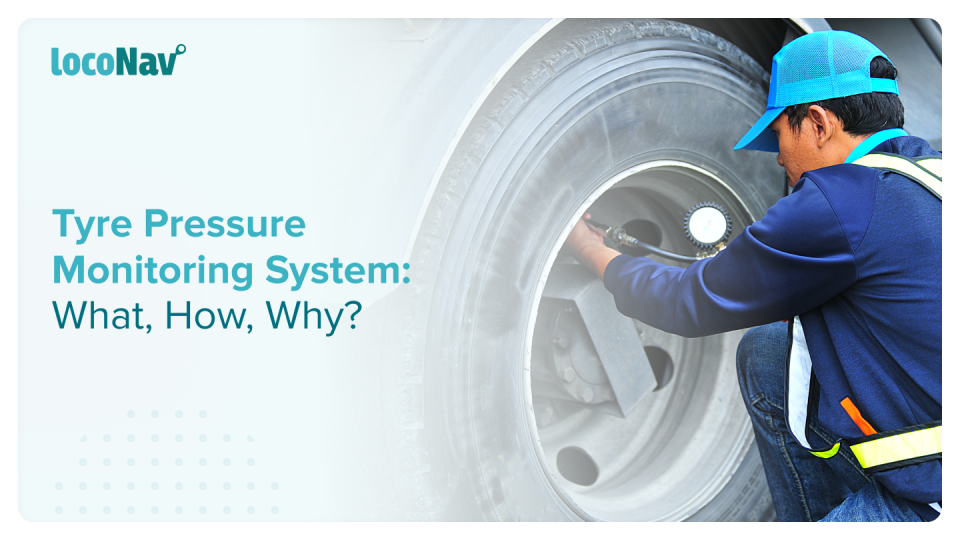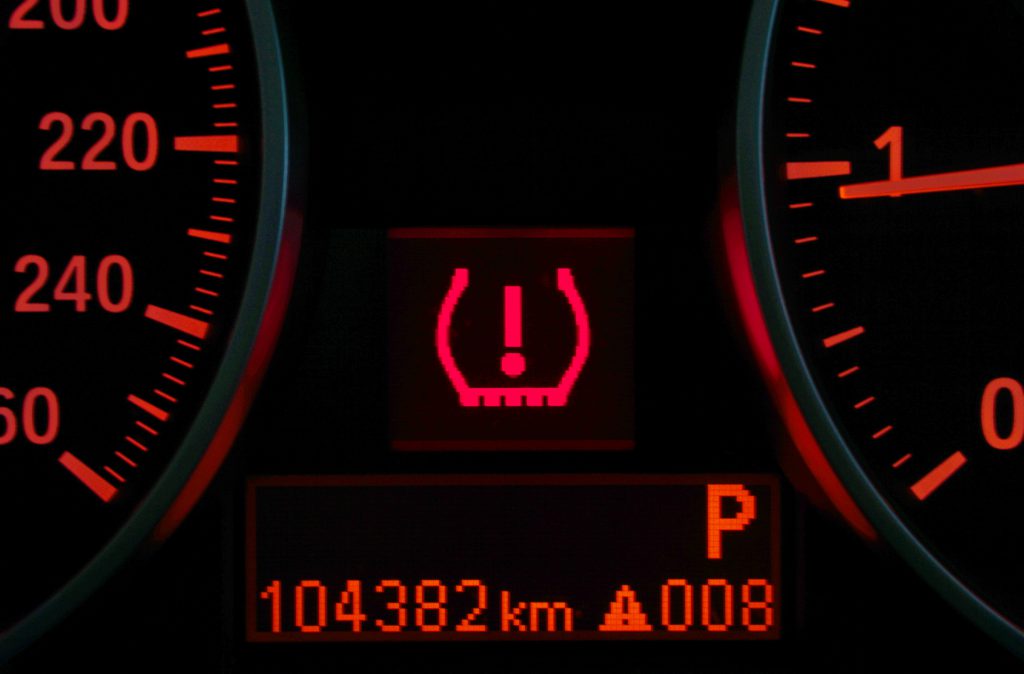

Did you know that your tyres wear out faster if the correct pressure is not maintained? Your tyres are probably more important than you realize. Brakes and tyres are the cornerstones of your vehicle’s safety. Your tyres will properly absorb shocks and follow steering directions better when the correct tyre pressure is maintained. A tyre with lower or higher than optimum pressure will not perform well. A tyre pressure monitoring system is important to ensure that your tyres are at optimum pressure at all times.
Since we have now established why tyre pressure is important, let’s understand what it is, how it works, and its different types.
What is Tyre Pressure Monitoring System?
TPMS or tyre Pressure Monitoring System is a technology that is used to monitor the real-time air pressure in your fleet’s tyres. A sensor gathers this information and transmits it to the driver in the form of an indicator on the vehicle’s dashboard or via an alert on the web or mobile platform. The purpose of the tyre pressure monitoring system sensor is to alert the driver of possible safety concerns that may be caused due to inadequate tyre pressure.
The working model of the TPMS is different for its different types of sensors. Let’s now learn about the various types of tyre pressure monitoring system sensors.
What are the Different Types of TPMS?
The TPMS system is of 2 different kinds:
- Direct TPMS System
- Indirect TPMS System
Indirect TPMS & its Working
As is obvious from the name, the working of an indirect TPMS is not dependent on the presence of a physical sensor. In this case, the pressure is measured by the revolution rate of the wheel which is analyzed and presented to the driver, while keeping benchmark numbers of the corresponding tyre size in mind.
If the tyre starts to revolve faster or slower than usual, the onboard computing technology detects the change and warns the driver of the tyre’s over or under-inflation.
Direct TPMS & its Working
Direct TPMS is the most basic and preferred method of tyre pressure monitoring. Each tyre is fitted with a separate sensor and the sensor directly sends tyre pressure data to the driver. The sensor is battery-powered and informs the driver in case tyres need to be changed or if the air in the tyre is to be filled or reduced.
How does TPMS Enhance Fleet Safety?
As a fleet manager, you’re definitely concerned with enhancing fleet safety. Believe it or not, a TPMS is a crucial element in achieving that goal. Read on to find out more about how a tyre pressure monitoring system contributes to fleet safety.
- Needless to say, if your driver cannot steer properly, you cannot hope to have a safe fleet. tyre pressure is important for maintaining optimum response time between tyres and the steering wheel.
- tyre pressure also plays a role in the braking system of your vehicle. An efficient braking system is directly correlated to safer driving as it minimizes the chances of driving accidents.
- A severely under-inflated tyre can burst due to excessive heat generation which can cause both damage to your fleet and people on the road. A tyre pressure management system will make sure that does not happen.
- Over-inflation affects the shock absorption of your vehicle which is dangerous to both the driver and the goods being carried by your fleet.
- Sometimes the tyre pressure, although low, may not be visible to the eye. Over time this leads to excessive wear and tear, which also hinders fleet safety.
The lack of proper tyre pressure monitoring leads to all the problems we’ve discussed above. It is safe to deduce that employing a tyre pressure monitoring system can directly enhance your fleet’s safety.
FAQ
How does TPMS detect tyres?
In a direct TPMS, each tyre is fitted with a separate sensor so you can clearly detect the tyre pressure of each tyre individually.
Are tyre pressure monitoring systems accurate?
Tyre pressure monitoring systems are accurate to ± 3%.
How to check if your vehicle has TPMS?
Turn on your vehicle without starting the engine, and if you have a sensor that looks like the one below, your vehicle has a tyre pressure monitoring system (TPMS).

How often should you replace tyre pressure sensors?
A tyre pressure sensor is created to last for up to 10 years. In a direct TPMS, batteries need to be replaced once the batteries run out.
Can you reset TPMS yourself?
Yes, it is possible to manually reset a TPMS.
Turn on the car without turning on the ignition. The TPMS will have a reset button under the steering wheel. Press it until the sensor light blinks 3 times and wait for 20 minutes. Your TPMS will most likely be reset.